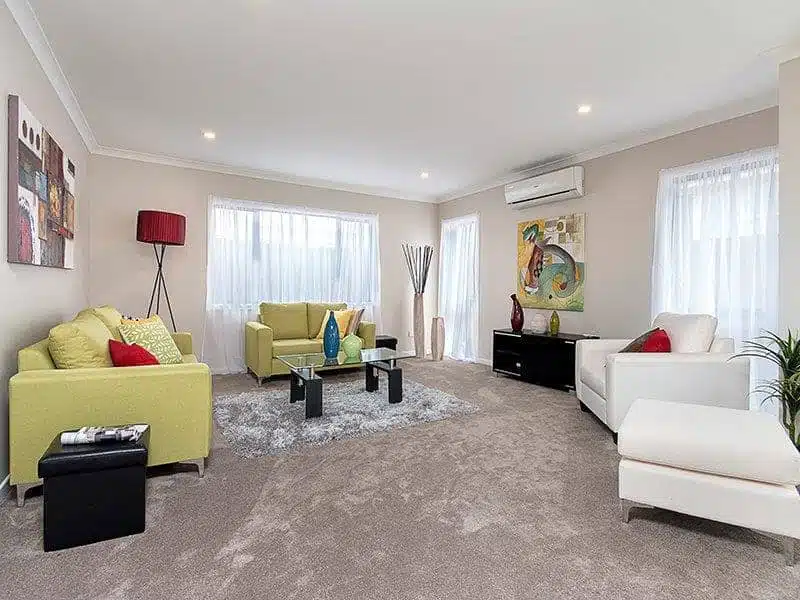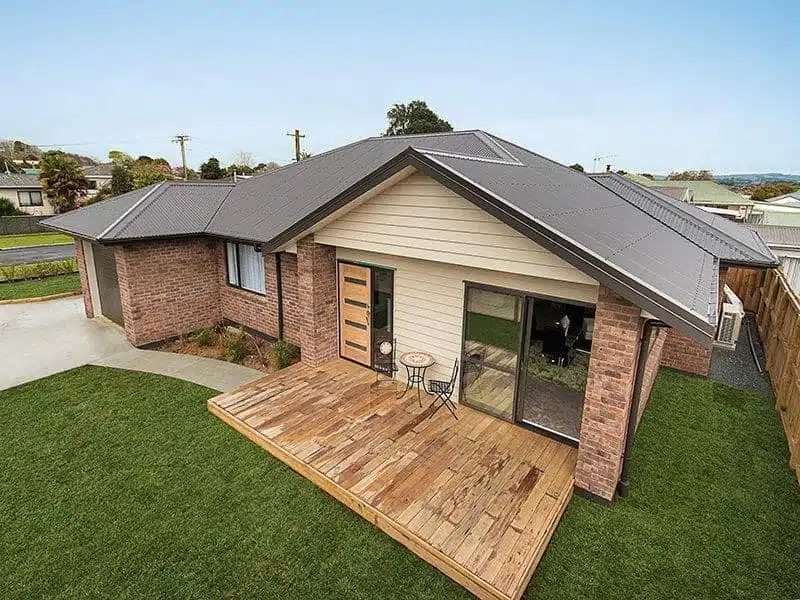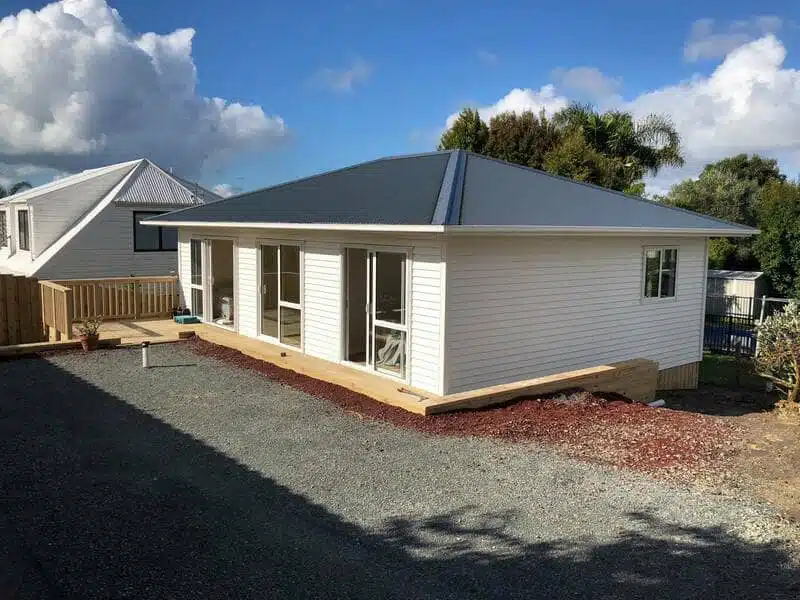Home renovations are more than just a trend in Franklin; they’re a smart investment in your property and quality of life. As housing prices continue to rise, many Franklin homeowners are choosing to upgrade their existing homes rather than move. Renovations can increase your home’s value, improve energy efficiency, and create spaces that better suit your lifestyle.
In Franklin’s competitive real estate market, a well-renovated home stands out. Whether you’re planning to sell or simply want to enjoy a more comfortable living space, renovations can make a significant difference.
From updating outdated kitchens to adding much-needed storage, the right improvements can transform your house into your dream home.
Overview of the guide's contents
This guide is designed to be your complete guide to home renovation in Franklin. We’ll cover everything you need to know, from the initial planning stages to the final touches of your project.
Here’s what you can expect:
N
A beginner’s guide to home renovation, explaining key concepts and common pitfalls
N
Tips on how to prioritise home renovations and create a realistic budget
N
A comprehensive house renovation checklist to keep you on track
N
Guidance on where to start with a full house renovation
N
Step-by-step breakdown of the renovation process
N
Advice on how to prepare for home renovation, including practical tips for living through the chaos
N
Detailed information on costs, including estimates for a full house renovation in Franklin
N
Insights on working with professionals and when to DIY
N
Answers to frequently asked questions about renovating in Franklin
Whether you’re considering a minor update or a complete home overhaul, this guide will give you the knowledge and confidence to tackle your renovation project successfully. Let’s get started on transforming your Franklin home!
Beginners Guide to Home Renovation
Home renovation involves improving or modernising an existing structure. It can range from simple cosmetic updates to major structural changes. Before starting, consider:
A
Your goals: Are you renovating to increase home value, improve functionality, or both? Clearly defining your objectives will guide your decisions throughout the renovation process.
A
Your budget: Determine how much you can realistically spend. This should include not only the cost of materials and labour but also a contingency fund for unexpected expenses.
A
Your timeline: Establish a realistic schedule for completion. Consider factors like contractor availability, material delivery times, and potential delays due to unforeseen issues.
A
Your living arrangements: Decide if you'll stay in the home during renovations. This decision will impact your budget, timeline, and overall renovation strategy.
A
Remodelling: Changing a room's structure or layout. This might involve moving walls, changing room configurations, or altering the fundamental use of a space.
A
Restoration: Returning a property to its original state. This often involves repairing or replacing historical features to maintain the home's character.
A
Structural changes: Alterations affecting load-bearing elements. These changes require careful planning and often involve professional engineers to ensure safety and compliance.
A
Planning permission: Official approval for certain renovations. This is typically required for major changes, especially those affecting the exterior of your home or its fundamental structure.
A
Building regulations: Standards your renovation must meet. These cover aspects like safety, energy efficiency, and accessibility to ensure your renovated home is up to code.
A
Contingency fund: Extra money set aside for unexpected costs (typically 10-20% of budget). This helps manage surprises without derailing your entire project.
A
Underestimating costs: Always budget more than you think you'll need. Unexpected issues often arise during renovations, and having a financial buffer can prevent stress and project delays.
A
Neglecting necessary permits: Ensure all work is legally approved. Skipping this step can lead to fines, forced removal of completed work, or difficulties when selling your home.
A
Prioritising aesthetics over function: Address structural issues before cosmetic ones. While it's tempting to focus on visual improvements, underlying problems can compromise your renovation if not addressed first.
A
Hiring unqualified contractors: Always check references and credentials. A reputable, experienced contractor can save you time, money, and headaches in the long run.
A
Ignoring the property's character: Ensure renovations complement your home's style. While modernising is often the goal, maintaining some original features can preserve your home's unique charm and potentially its value.
A
Overimproving for the neighbourhood: Be mindful of local property values. While you want your home to be beautiful and functional, overspending on high-end finishes may not be recouped if you decide to sell.
When undertaking a full house renovation, it’s crucial to have a solid plan. Start by creating a full house renovation checklist to keep track of all necessary tasks. This will help you know how to prioritise home renovations effectively, ensuring you address the most important aspects first and maintain a logical order of work.
Remember, renovation is a journey. It requires patience, flexibility, and careful planning.
By understanding these basics, familiarising yourself with key concepts, and being aware of common pitfalls, you’re taking the first steps in your beginner’s guide to home renovation. This knowledge will serve as a foundation as we delve deeper into the renovation process in the following sections.
Assessing your needs and wants
Start by evaluating your current living situation. Consider:
Functionality: Which areas of your home aren't working well for your lifestyle?
Space utilisation: Are there rooms you rarely use or spaces that feel cramped?
Aesthetics: Which parts of your home look outdated or no longer appeal to you?
Energy efficiency: Could your home benefit from upgrades to reduce energy costs?
Make two lists: one for essential improvements (needs) and another for desired changes (wants). This will help you focus on what’s most important when making decisions.
How to prioritise home renovations
Determining the order of your renovation tasks is crucial for a successful project. Consider these factors:
R
Urgency: Address any issues that affect your home's safety or structural integrity first.
R
Budget impact: Tackle projects that offer the most value for your money.
R
Disruption level: Consider starting with less intrusive renovations if you're living in the home.
R
Logical order: Some renovations naturally precede others (e.g., electrical work before plastering).
R
Season: Plan weather-dependent work (like exterior painting) for appropriate times of year.
Create a timeline that reflects these priorities, but remain flexible as unexpected issues may arise. This approach will help you develop a house renovation checklist to keep your project on track.
A well-planned budget is essential for any renovation project. Here’s how to create one:
Research costs: Get multiple quotes for major works and research material costs.
Factor in hidden expenses: Include costs for permits, temporary accommodation, and potential overruns.
Set a contingency: Add 10-20% to your total budget for unexpected issues.
Consider financing options: Determine if you'll use savings, a loan, or a combination.
Prioritise spending: Allocate more budget to high-impact areas and essential repairs.
Track expenses: Use a spreadsheet or budgeting app to monitor costs throughout the project.
When considering the overall cost, remember that it varies widely based on the scope of work, quality of materials, and your location. For an extensive renovation, expect to budget anywhere from £500 to £2,000 per square metre, depending on these factors.
Understanding the cost to completely renovate a house in your area will help you set realistic financial goals.
By thoroughly assessing your needs, prioritising your renovations, and creating a realistic budget, you’re laying a solid foundation for your project. This planning phase is crucial and will help ensure that your renovation meets your expectations without breaking the bank. As you move forward, you’ll need to consider how to prepare for a home renovation, which we’ll cover in later sections.
Full House Renovation: Where to Start
Initial steps for a whole home renovation
Assessment: Conduct a thorough inspection of your home's current condition. This includes checking the structural integrity, electrical systems, plumbing, and overall layout to identify areas that need improvement.
Goals: Clearly define what you want to achieve with your renovation. Consider both aesthetic and functional improvements, and how they align with your long-term plans for the property.
Budget: Determine how much you can afford to spend. This should include not only the cost of materials and labour but also a contingency fund for unexpected expenses.
Professional help: Decide if you need an architect, designer, or project manager. These professionals can provide valuable expertise and help you avoid costly mistakes.
Permissions: Check if you need planning permission or building regulations approval. This is crucial to ensure your renovation is legal and meets all local requirements.
Room-by-room analysis: Evaluate each space and its intended function. Consider how you currently use each room and how you'd like to improve its functionality or appearance.
Flow and layout: Consider how you want to move through your home. This might involve opening up spaces, changing room configurations, or improving traffic patterns.
Structural changes: Identify any walls to be removed or added. These changes can significantly impact your home's layout and may require professional engineering input.
Systems upgrade: Plan for updates to electrical, plumbing, and HVAC systems. Modernising these systems can improve your home's efficiency and comfort.
Timeline: Create a realistic schedule for completing each phase of the renovation. Consider factors like contractor availability, material lead times, and potential delays.
Priorities: Decide which areas to tackle first based on importance and budget. This helps ensure that essential improvements are made even if unforeseen issues arise later in the project.
House renovation checklist
A comprehensive checklist helps ensure nothing is overlooked. Here’s a basic house renovation checklist to get you started:
House renovation checklist
Foundation repairs: Address any cracks or settling issues to ensure your home's stability.
Roof replacement or repair: A sound roof is crucial for protecting your home from the elements.
Wall removals or additions: Consider how these changes will affect your home's structure and flow.
Electrical rewiring: Ensure your home's electrical system can handle modern appliances and technology.
Plumbing updates: Improve water pressure, efficiency, and address any leaks or outdated pipes.
HVAC installation or replacement: Upgrade to more efficient heating and cooling systems for comfort and energy savings.
Insulation and weatherproofing:
Wall and loft insulation: Proper insulation can significantly reduce energy costs and improve comfort.
Window and door replacements: Energy-efficient options can enhance your home's appearance and thermal performance.
Flooring installation: Choose materials that suit each room's function and your overall design aesthetic.
Wall treatments (painting, wallpapering): Refresh your interiors with colours and textures that reflect your style.
Ceiling repairs or replacements: Address any water damage or outdated styles like popcorn ceilings.
Cabinetry installation: Maximise storage and update the look of these high-traffic areas.
Appliance upgrades: Consider energy-efficient models to reduce long-term costs.
Fixture replacements: Update taps, showers, and toilets for improved functionality and style.
Weatherboard repair or replacement: Enhance your home's curb appeal and weather resistance.
Landscaping: Create an inviting outdoor space that complements your renovated home.
Driveway and pathway improvements: Ensure safe, attractive access to your property.
Lighting fixtures: Choose options that enhance the ambience and functionality of each space.
Hardware installation: Update doorknobs, cabinet pulls, and other hardware for a cohesive look.
Interior decorating: Select furnishings and décor that showcase your personal style and complete the renovation.
This checklist provides a framework for your full house renovation. Adjust it based on your specific needs and priorities. Remember, when considering where to start a full house renovation, the process typically moves from structural work to finishes but can vary depending on your particular situation.
By starting with these initial steps, developing a comprehensive master plan, and utilising a detailed checklist, you’ll be well-prepared to tackle your whole home renovation project. This structured approach helps minimise surprises and keeps your project on track, both in terms of timeline and budget.
Understanding the various steps involved in home renovation is crucial for a successful project. Here’s a breakdown of the key phases:
\
Concept development: Work with an architect or designer to create initial plans. This involves discussing your ideas, budget, and lifestyle needs to develop a vision for your renovated space.
\
Detailed drawings: Produce precise blueprints for construction. These technical drawings will guide your builders and ensure everyone is working towards the same goal.
\
Material selection: Choose finishes, fixtures, and materials. This step involves balancing aesthetics, durability, and cost to find the best options for your renovation.
\
Permits and approvals: Obtain necessary permissions from local authorities. This crucial step ensures your renovation complies with local building codes and regulations.
The design phase sets the foundation for your entire renovation. Take time to refine your plans and ensure they align with your vision and budget.
Demolition and structural changes
\
Site preparation: Protect areas not being renovated. This involves covering floors, sealing off rooms, and ensuring valuables are safely stored away from the construction zone.
\
Demolition: Remove unwanted elements and clear space for new work. This can range from removing old fixtures to knocking down walls, depending on your renovation plans.
\
Structural modifications: Make changes to walls, floors, or roof as needed. This is when major alterations to your home's structure occur, such as creating open-plan spaces or adding extensions.
\
Waste removal: Dispose of debris properly. Efficient waste management is crucial for maintaining a safe work environment and complying with local regulations.
This phase can be messy and disruptive. If you’re wondering how to prepare for a home renovation, consider temporary accommodation during major demolition work.
Mechanical, electrical, and plumbing
\
Rough-in work: Install new wiring, pipes, and ductwork. This involves laying the groundwork for your home's essential systems before walls and floors are closed up.
\
System upgrades: Update electrical panels, boilers, or HVAC units as needed. Modernising these systems can improve your home's efficiency and comfort.
\
Energy efficiency improvements: Add insulation and seal air leaks. These upgrades can significantly reduce your energy bills and improve your home's comfort.
\
Inspections: Arrange for necessary checks by local authorities. These ensure that all work meets safety standards and building codes.
These behind-the-walls improvements are vital for a functional, efficient home. Proper planning here can prevent costly changes later.
\
Plasterboard: Repair or install new walls and ceilings. This step prepares your surfaces for decorating and helps define the final shape of your renovated spaces.
\
Flooring: Lay new floor coverings or refinish existing ones. Your choice of flooring can dramatically impact the look and feel of your renovated home.
\
Painting and decorating: Apply finishes to walls, trim, and ceilings. This step brings colour and personality to your spaces, helping to realise your design vision.
\
Kitchen and bathroom fitting: Install cabinetry, countertops, and fixtures. These high-use areas often require specialised installations to ensure functionality and durability.
\
Lighting and electrical finishing: Install switches, outlets, and light fittings. Proper lighting can enhance the ambience and functionality of your newly renovated spaces.
\
Final touches: Add hardware, window treatments, and other decorative elements. These finishing touches pull your design together and make your house feel like a home.
This final phase brings your vision to life. Careful coordination of tradespeople is crucial to ensure a smooth process.
When planning your renovation, use this overview to create a detailed project timeline. Remember, the exact order may vary depending on your specific project needs and local regulations.
Always consult with professionals to ensure your renovation progresses safely and efficiently.
How to Prepare for Home Renovation
Proper preparation is key to a smooth renovation process. Here’s how to get ready:
\
Declutter: Remove unnecessary items from the renovation area. This is an excellent opportunity to sort through belongings and dispose of things you no longer need.
\
Pack and label: Carefully pack items you want to keep. Label boxes clearly for easy identification later.
\
Storage solutions: Consider renting a storage unit or using a spare room for items you can't keep on-site during the renovation.
\
Furniture removal: Move large furniture pieces out of the way. If possible, relocate them to other rooms or consider temporary storage.
Temporary living arrangements
\
Assess the impact: Determine how much of your home will be affected by the renovation. This will help you decide whether you need to move out temporarily.
\
Alternative accommodation: If staying in your home isn't feasible, consider options like staying with family, renting a short-term flat, or even camping in the garden for smaller projects.
\
Budget for living costs: When calculating how much for a full house renovation, factor in the costs of temporary accommodation if needed. This can significantly impact your overall budget.
\
Plan for essentials: If staying in your home, ensure you have access to a functioning bathroom and kitchen, even if it's a makeshift setup.
Protecting valuables and non-renovation areas
\
Create barriers: Use plastic sheeting and tape to seal off areas not being renovated. This helps contain dust and debris.
\
Cover furniture: If furniture can't be moved, cover it with dust sheets or plastic covers.
\
Protect flooring: Use protective coverings on floors in high-traffic areas leading to and from the renovation zone.
\
Secure valuables: Store important documents, jewellery, and other valuables in a safe place, preferably off-site.
\
Consider air quality: Use air purifiers in non-renovation areas to help manage dust and maintain air quality.
\
Communicate with contractors: Mark areas that are off-limits to workers and discuss your expectations for protecting non-renovation spaces.
By taking these steps, you’ll create a safer, more organised environment for your renovation project.
Remember, thorough preparation can save time, reduce stress, and help protect your property during the renovation process. It’s an essential part of ensuring your project runs smoothly and stays within budget, especially when considering the overall cost of a whole home renovation.
Understanding the financial aspects of your renovation project is crucial for success. Let’s break down the key factors and provide some helpful insights.
Factors affecting renovation costs
\
Scope of work: The extent of your renovation significantly impacts costs. A simple refresh will cost less than structural changes.
\
Property size: Larger homes generally require more materials and labour, increasing overall costs.
\
Materials quality: High-end finishes and fixtures will drive up expenses compared to standard options.
\
Labour costs: Skilled tradespeople's rates can vary, affecting your budget.
\
Location: Costs can differ based on your area in Franklin due to local market conditions and accessibility.
\
Unexpected issues: Unforeseen problems, like hidden structural damage, can add to your expenses.
Cost for full house renovation
The cost for a full house renovation can vary widely depending on the factors mentioned above. In Franklin, you might expect to pay:
\
Basic renovation: NZ$1,000-NZ$2,000 per square metre for cosmetic updates and minor repairs.
\
Mid-range renovation: NZ$2,000-NZ$3,000 per square metre for more extensive work, including some structural changes.
\
High-end renovation: NZ$3,000-NZ$4,000+ per square metre for premium materials and significant structural alterations.
How much for a full house renovation in Franklin
To estimate the total cost for your Franklin home:
\
Calculate the total floor area of your property in square metres.
\
Multiply this by the per-square-metre cost based on your desired level of renovation.
\
Add 10-20% as a contingency for unexpected expenses.
For example, a 150 square metre home undergoing a mid-range renovation might cost between NZ$300,000 and NZ$450,000, plus contingency.
Budgeting tips and tricks
\
Prioritise: Focus on essential improvements first, then allocate remaining funds to "nice-to-have" upgrades.
\
Get multiple quotes: Compare at least three quotes for each major aspect of the renovation.
\
Consider timing: Some contractors offer discounts during their off-peak seasons.
\
DIY wisely: Save on labour for simple tasks, but leave complex work to professionals.
\
Reuse and upcycle: Consider refreshing existing features rather than replacing them entirely.
\
Plan for overages: Always include a contingency fund in your budget for unexpected costs.
\
Break it down: Create a detailed, itemised budget to track expenses more effectively.
\
Explore financing options: Look into home improvement loans or use your KiwiSaver for first-home buyers if applicable.
Remember, while cost is important, it shouldn’t be the only factor in your decisions.
Balance your budget with the quality and longevity of the renovation. A well-executed renovation can add significant value to your Franklin home, making it a worthwhile investment in the long run.
Always consult with local professionals to get the most accurate estimates for your specific project in Franklin, New Zealand.
Choosing the right contractor
\
Research: Look for licensed and insured contractors with good reputations in Franklin.
\
Get recommendations: Ask friends, family, or neighbours for referrals.
\
Check credentials: Verify licenses, insurance, and certifications.
\
Review past work: Ask for portfolios and references from previous clients.
\
Get detailed quotes: Compare at least three quotes, ensuring they cover the same scope of work.
\
Communication: Choose a contractor who communicates clearly and promptly.
At Rag Renos, we pride ourselves on our transparent communication and detailed quotes. We understand that choosing a contractor can be daunting, which is why we’re always happy to discuss your project in detail and provide references from our satisfied clients in Franklin.
Working with architects and designers
Architects and designers can bring valuable expertise to your renovation project:
\
Architect's role: They focus on structural elements, spatial planning, and ensuring compliance with building codes.
\
Designer's role: They help with aesthetics, material selection, and interior layouts.
\
When to hire: Consider these professionals for complex renovations or when you need help visualising the result.
\
Collaboration: Ensure your architect or designer works well with your chosen contractor.
\
Costs: Factor in their fees when budgeting for your renovation.
We at Rag Renos have excellent relationships with local architects and designers. If your project requires their expertise, we can recommend trusted professionals or work seamlessly with your chosen experts.
DIY vs. Professional work
Deciding what to DIY and what to leave to professionals is crucial:
\
Architect's role: They focus on structural elements, spatial planning, and ensuring compliance with building codes.
\
Skills assessment: Be honest about your abilities and available time.
\
Cost considerations: DIY isn't always cheaper if mistakes need professional fixing.
\
Time factor: Professional work is often completed faster and to a higher standard.
\
Permits and regulations: Professionals understand local building codes and permit requirements.
While we encourage homeowners to be involved in their renovations, at Rag Renos, we emphasise the importance of professional work for key aspects of your project.
We’re happy to advise on which parts of your renovation are suitable for DIY and which are best left to our experienced team.
Remember, a successful renovation often involves a mix of professional expertise and homeowner input. By carefully considering these factors, you can ensure your Franklin home renovation project proceeds smoothly and achieves the best possible results.
FAQ: Common Questions about Home Renovations in Franklin
What are the 5 stages of renovation?
The five main stages of renovation are:
- Planning (budgeting, design, permits)
- Demolition
- Construction
- Finishing
- Clean-up and final inspection
What does "complete renovation" mean?
A complete renovation involves updating or replacing most elements of a home.
This includes structural changes, new systems (electrical, plumbing), updated insulation and windows, new flooring, kitchen and bathroom remodels, and fresh paint and finishes throughout.
What is the order for a full house renovation?
The typical order for a full house renovation is:
- Structural work
- Plumbing and electrical rough-ins
- Insulation and drywall
- Flooring
- Kitchen and bathroom fittings
- Painting and decorating
- Final touches (fixtures, hardware)
What permits do I need for home renovations in Franklin?
In Franklin, permits are typically required for structural changes, electrical and plumbing work, new additions, and major alterations to existing spaces. However, requirements can vary depending on the scope of your project.
It’s always best to check with the Franklin District Council before starting any renovation work to ensure you have all the necessary permits.
How can I ensure my renovation adds value to my Franklin home?
To add value to your Franklin home through renovation, focus on improvements that offer the best return on investment.
This often means updating kitchens and bathrooms, improving energy efficiency, creating open living spaces, and enhancing curb appeal. Most importantly, ensure all work is high-quality and complies with local building codes. This not only adds value but also prevents issues during future resale.
Home renovation in Franklin can be both exciting and challenging. This guide has covered the main steps, from planning to finishing, to help you make good choices about your project.
Successful renovations need careful planning, realistic budgets, and a clear idea of what you want. Whether you’re updating one room or the whole house, it’s important to balance your wishes with practical matters and local rules.
At Rag Reno’s, we know that every home and homeowner is different. We offer renovation services that fit your specific needs. Our team is here to help you through every part of your renovation, from start to finish.
We’ve seen how good renovations can improve homes and lives. It’s not just about adding value to your property; it’s about making a space that feels like home – where you can relax and enjoy time with family and friends.
If you’re thinking about a renovation, feel free to contact us at Rag Reno’s. We’d be happy to help make your ideas a reality and ensure your Franklin home meets your needs. With good planning and the right help, you can turn your Franklin house into the home you want. Good luck with your renovation!




